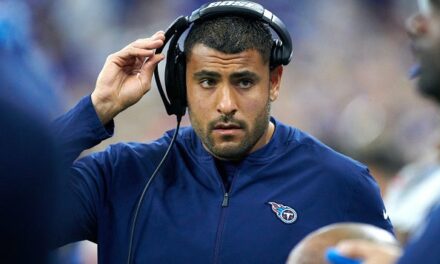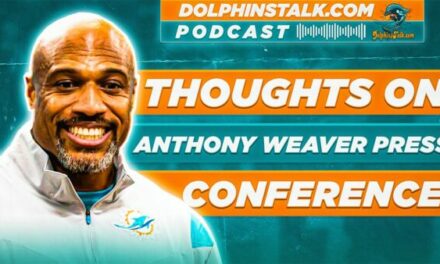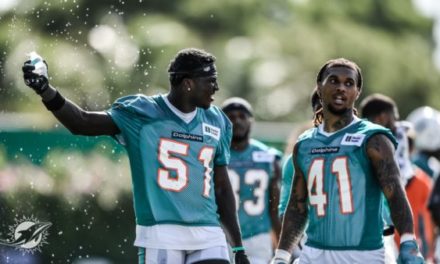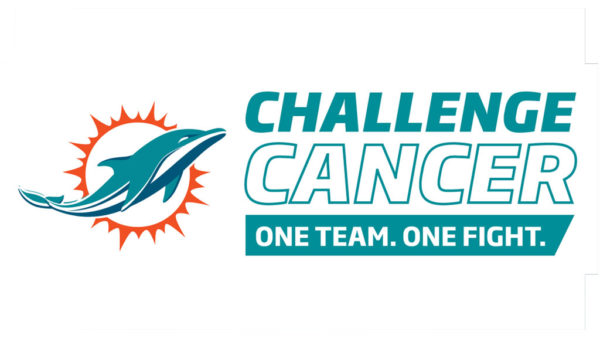Following the Miami Dolphins’ game against the Kansas City Chiefs, the NFL landscape buzzes with talk about the team’s offensive struggles. Penalties, near misses, and fumbled snaps dominate the public discourse, casting a shadow over one critical issue that demands our attention—the Dolphins’ persistent WR3 challenge.
Undeniably, the dynamic duo of Jaylen Waddle and Tyreek Hill commands the spotlight with their exceptional skills. Yet, beneath the brilliance of these star receivers, a lingering concern surfaces—the absence of a dependable third wide receiver capable of seamlessly integrating into Miami’s intricate offensive scheme.
The recent showdown against the Chiefs brought this matter to the forefront, exposing the vulnerability of Miami’s wide receiver depth. Waddle’s limitation due to a knee injury prompted an unexpected reliance on Cedrick Wilson Jr., who played a season-high 41 snaps—second only to Waddle. Wilson scored the only touchdown against the Chiefs, but looking closely at the game footage raises concerns about how reliable this temporary fix can be.
At the core of the issue lies the fact that the entire offensive strategy rotates around a singular element—speed. Coach Mike McDaniel has artfully crafted an offense designed to exploit the unique strengths of Waddle, Hill, and Tua Tagovailoa.
The electrifying speed of Hill and Waddle, arguably among the fastest in the league, allows Miami to bend conventional offensive norms. They can run fast and grab the ball swiftly, keeping the offensive line safe and making Tagovailoa perform really well.
However, the Achilles’ heel of this strategy is its overreliance on the exceptional speed of Hill and Waddle. When these two playmakers are sidelined, the Dolphins turn to a supporting cast that includes Wilson, Chase Claypool, and Braxton Berrios. Despite their individual strengths, these players lack the unique attributes that make Hill and Waddle linchpins in Miami’s game plan.
Wilson may have difficulty getting away from defenders in one-on-one situations, Claypool isn’t great at running routes, and Berrios finds it tough to handle defenders pressing him. The Chiefs smartly took advantage of these weaknesses, using the limitations of the backup receivers when Hill and Waddle weren’t playing.

The crucial timing element, fundamental to Miami’s offensive success, faltered when secondary receivers took too long to initiate their routes. This messes up how the Dolphins play, making it hard for them to make big plays. Without Hill on the field, Miami’s explosive play percentage plummets from 23% to a meager 16%.
It is essential to highlight that players like Berrios and Wilson, while valuable in their own right, bring specific strengths to the table. Wilson’s skill in contested catches, exemplified by his touchdown reception in Week 9, and Berrios’s role as a change-of-pace player and return specialist are not to be overlooked.
But the main problem is that they can’t do what Hill and Waddle do so well, creating problems for Miami’s offensive plan.
Unfortunately for the Dolphins, rectifying the WR3 deficiency presents a daunting challenge. The time for trades is over, and the free-agent market has few good choices. Notable names, including Anthony Schwartz, were part of recent wide receiver tryouts. Still, even their impressive speed could not compensate for other deficiencies, leaving Miami in a continued search for a suitable WR3.
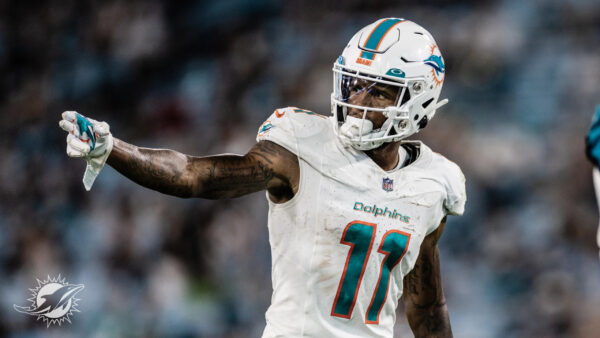
The most promising avenue for improvement may lie within the team’s current roster. River Cracraft, currently on injured reserve with a shoulder injury, emerges as a potential upgrade due to his existing chemistry with Tagovailoa. While his return date remains uncertain, Cracraft’s previous connections with the quarterback could prove instrumental.
Another internal option is Robbie Chosen, a player capable of matching the speed of Hill and Waddle. Even though Chosen has not played much, if he gets in the game, he could add new energy, especially with his speed that matches Miami’s offensive plan.
Basically, the Dolphins are in a tough spot with not many choices to strengthen their passing game. The consequences of decisions made before the trade deadline, including the acquisition of a receiver who struggled to make an impact with the Bears, now cast a long shadow. Finding a solution for WR3 looks tough, and the Dolphins have to be careful and smart as they check their limited choices to strengthen their offense.
As the season goes on, getting a WR3 is not just something they need to do strategically. It is a story that could shape how the Miami Dolphins do in the NFL. In football, having a good WR3 could be like the perfect high note that helps the Dolphins reach even greater success.

